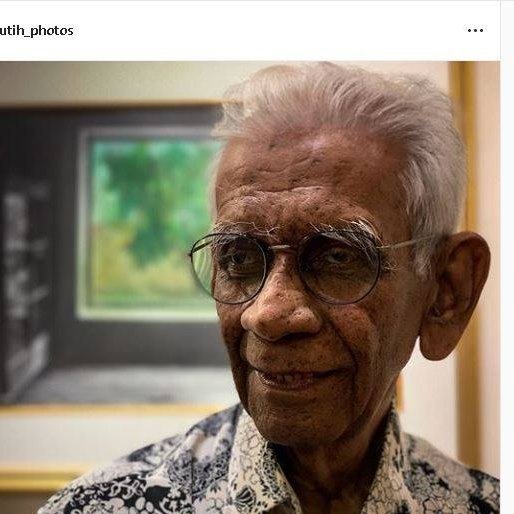
KUALA LUMPUR, Jan 7: “If you miss a story, you can recover it, but if you miss a picture, you ‘die'”.
This is the profound advice that O. Don Eric Peris, 85, still recalls, receiving from an editor of Fanfare magazine in Singapore, who discovered his talent as a photographer.
Born in Johor Bahru, Eric started his career as a photojournalist at Fanfare in the 1960s and later moved to the New Straits Times in Kuala Lumpur from the 1970s until his retirement in 1994.
“I became interested in photography at 12 years old when my aunt showed me a camera. I was very excited but my dad told me to prioritise my studies.
“However, as a token of support, my father still bought me a camera. Then I realised that interest alone was not enough. I needed to be in the industry to experience it firsthand,” he said after the launch of Project Archive: Eric Peris by Yayasan Sutra Chairman Datuk Ramli Ibrahim at the National Art Gallery here, recently.
The National Art Gallery has comprehensively documented his vast body of work to highlight Eric’s artistic journey and thus recognise his talent that often overlaps between fine art and photojournalism.
The year-long exhibition at the Portrait Gallery in the National Art Gallery, which ends in May, contains over 100 archival collections of documents, newspaper clippings, brochures, and artworks from Eric’s collection and the national visual art collection.
Despite not having any formal training, Eric is famous for producing striking black-and-white images.
“If it’s a colour image, we can see all the shapes of an image straight away. But, if it’s a black and white film, we need to pay closer attention to the shape and design… and that’s what excites me,” he said, describing these monochromatic images as mysterious and alluring.
Eric, who loves to capture the beauty of nature, said in addition to endless patience, being a photographer also requires constant practice in taking photographs to improve one’s skills.
“Just take any photo anywhere, for example, a photo of a tree, river, or road. The essential point is to know the purpose of taking pictures because that’s the real education and that’s your teacher.. not just from books,” he said, adding that photographers must also respect the culture and customs of certain locations.
He said, the image itself is the fundamental aspect and it does not matter whether the camera is analog or digital.
“Whether (the camera) is analog or digital, it doesn’t make a big difference, what matters most is the image and that depends on our own eyes.
“Will we be able to capture the right picture? Is it (the picture) vertical or horizontal? These decisions are ours to make,” he said.
Eric credits his family, particularly his parents, as a source of inspiration and said he sought advice and guidance from them along the way.
Over four decades as a photojournalist, Eric has produced various photo essays and written photography articles, held his first photo exhibition in 1982, and 43 solo photo exhibitions to date.
Among his masterpieces are Windows Series No. 1, Rupa #7, Images of Gitanjali, Malayan Railway, Entrance and Exit, Ibu Renang, Light and Shadow, Mek Jah In Main Petri, Dance Of Forever, Larry’s Tao Of Physics, Malayan Tin Mine and Rural Malaya.
— BERNAMA